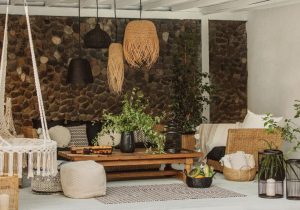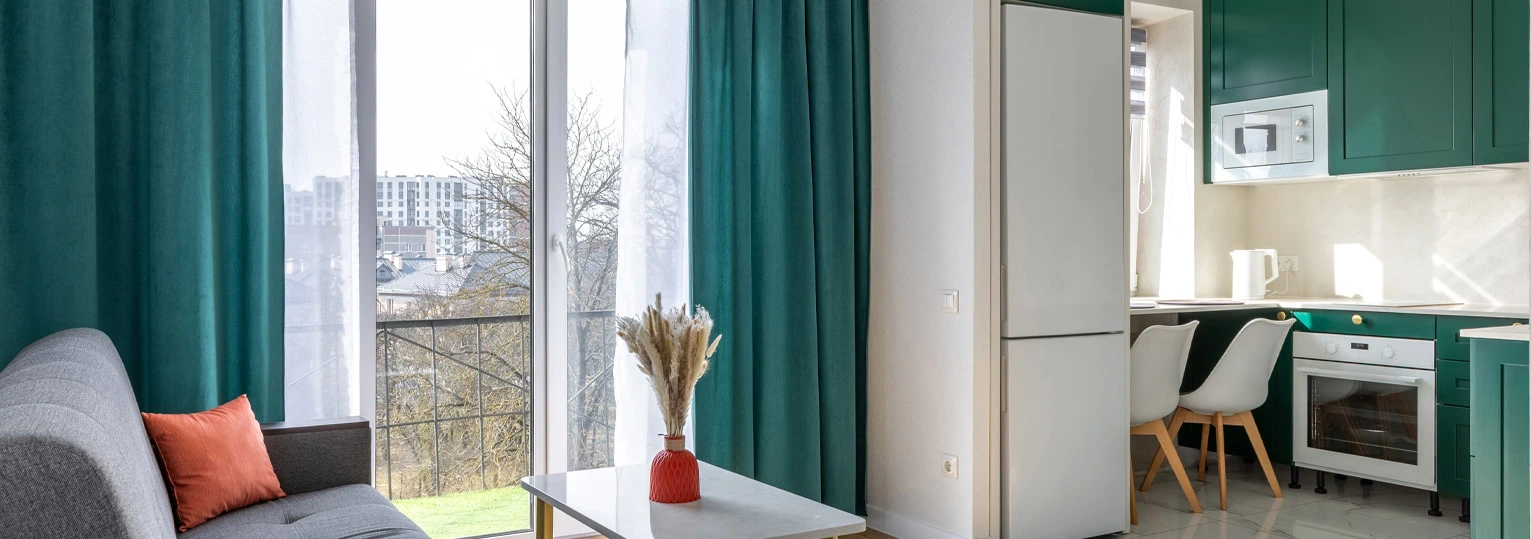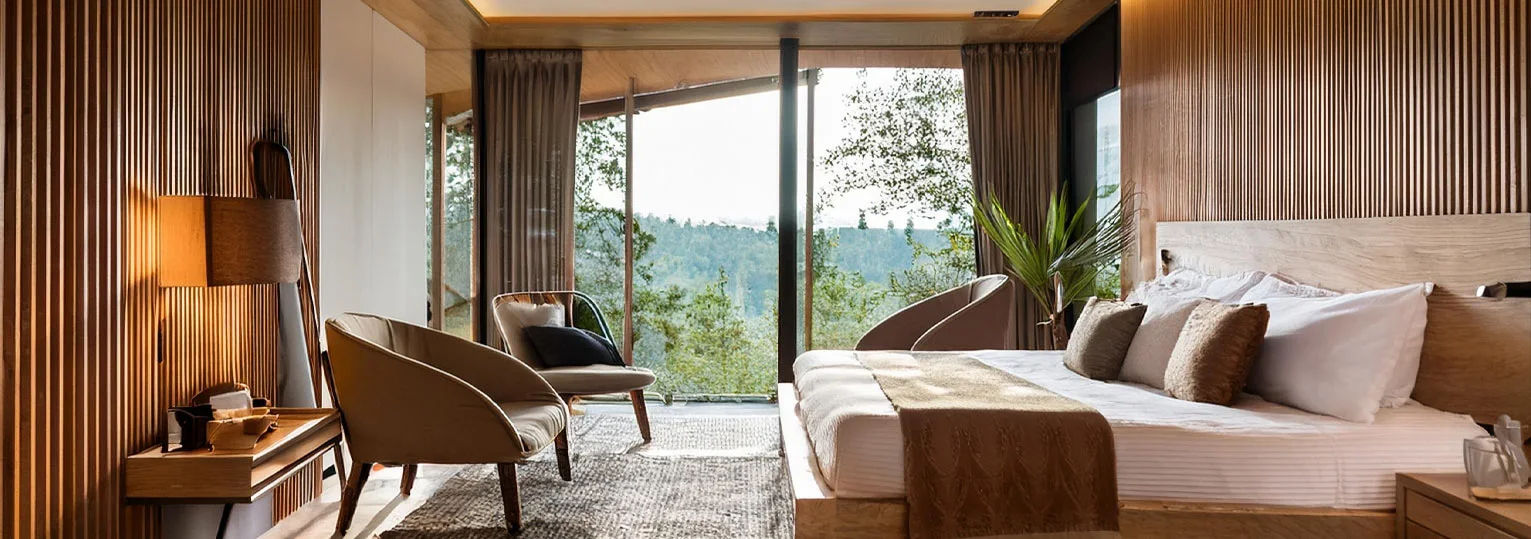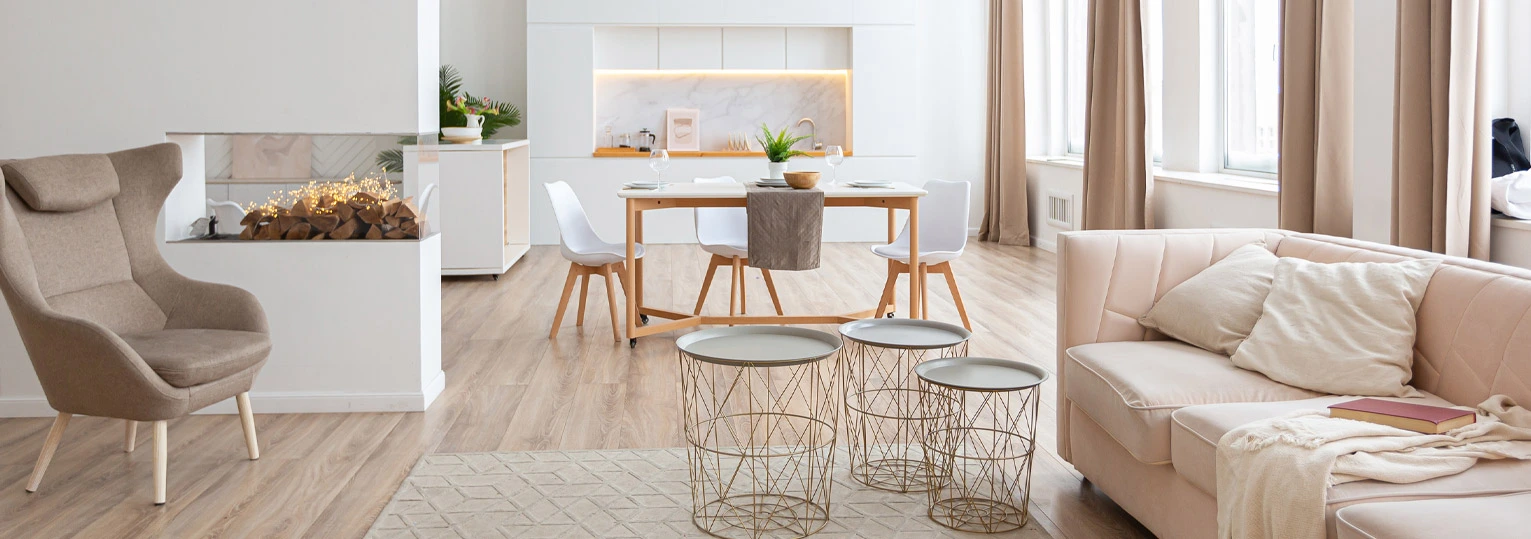In India, our homes have always been more than just shelters—they are spaces where tradition, culture, and family life come together. As we move towards a future that is increasingly conscious of environmental impact, the way we design our homes is also evolving. The concept of sustainable interior design, while rooted in modern environmentalism, finds a natural ally in the age-old practices of Indian craftsmanship and resourcefulness.
Think of the cool, mud-plastered walls of a Rajasthani haveli, or the sturdy, reclaimed wooden beams that have supported Kerala’s traditional tharavadu homes for generations. These elements aren’t just beautiful; they’re inherently sustainable, utilizing locally sourced materials and age-old techniques that are in harmony with the environment
There is a growing recognition that our rich architectural heritage offers valuable lessons in sustainability—lessons that can be seamlessly integrated with modern design to create homes that are both eco-friendly and reflective of our cultural roots.
This guide will delve into sustainable materials that are particularly relevant to Indian homes, exploring how these eco-friendly options can be used to create a space that is not only aesthetically pleasing but also kind to the planet.
From the versatility of bamboo, which has been used in Indian construction for centuries, to the resurgence of terracotta in modern interiors, we’ll show you how to blend tradition with contemporary green trends. Let’s embark on a journey to transform your home into a sanctuary that honors both your heritage and your commitment to sustainability.

Drawing from Traditional Practices: In very many ways, sustainability comes back to the roots of the Indian design. Traditional Indian homes were often put up using locally sourced materials that were both sustainable and suited to the local climate. For instance, the use of mud and lime in construction not only provided excellent insulation against heat but also allowed the buildings to “buzzle,” reducing the need for artificial cooling.
Mud and Lime Plaster: Traditional material in the walls of most rural homes is gaining inroads into eco-conscious design circles. Biodegradable, available locally, with very minimal environmental impacts. Modern Architects appreciate Mud and Lime Plaster for its excellent properties as a natural temperature regulator indoors.
Regional Material Celebration: Due to the variation in physiographic conditions in India, different regions developed their indigenous sustainable building practices. They exploited human resources by availing themselves of the materials surrounding their lands, such as the use of laterite stone as a traditional building material over centuries in southern states, many prized for their thermal qualities and ease of carving; bamboo has been a common building material in all households in northeastern hill states for its high tensile strength and rapid renewal rate.
Laterite Stone: Local quarries source this durable and attractive material, which is widely used in Kerala and parts of Karnataka. The porosity gives it the added advantage of good insulation-ideal for keeping homes cool during the blistering Indian summers.
Bamboo: It is a fast-growing, renewable resource that has served conventionally for construction across Northeastern states. For strength and resilience with inherent resistance to pests, it is a perfect fit for modern sustainable design.

Reclaimed wood is being introduced to Indian homes as an eco-friendly alternative to new timber. The characteristic wear-and-tear adds in a layer of history and character from its former life, making it a unique addition to any interior.
Earthy tones and natural finishes find a great deal of following in Indian homes these days. The reddish-brown color of the terracotta, the soft greens of the lime wash-make for just perfect tones while aiming for a natural and soothing environment.
Minimalism doesn’t have to be sterile or cold. This 2024, the twist will probably go to minimalist designs that are infused with cultural elements within them. Think about a neat and modern setting with traditional Indian crafts or art in them. This way, one can keep the home clutter-free yet resonate their cultural identity.
For the second half of 2024, the big trend in smart technologies integrated with sustainable design covers everything from energy-efficient appliances to smart lighting systems that reduce energy consumption and create homes that are beautiful, sustainable, and tech-savvy.
Utilize smart thermostats that can regulate the temperature in your home so that it is comfortable and efficient at the same time. To this, add other sustainable materials such as bamboo or reclaimed wood to create a truly future-ready home
Reclaimed wood from old buildings in Kolkata and Mumbai finds its way into modern interiors, taking away the pressure of requiring new timber. This retains a little bit of history and merges the old with the new.
Terracotta or baked earth has been used in Indian buildings over several millennia. From the intricately designed terracotta temples of Bengal to the humble clay pots used in all of rural India, this is a material that is both aesthetic and environment-friendly.
Terracotta is finding its place in modern interiors, too, in the forms of flooring, wall tiles, and even accessories. The earthy tone of color and the inherently cooling nature create an ideal ambience for most Indian homes, especially in hot climates.
This is one of the new but age-old raw materials coming from the trunk of coconut palms when fallen and no longer productive. This is an environment-friendly wood and is fast gaining acceptance for making furniture and flooring, particularly in coastal regions of Kerala and Tamil Nadu.
Coconut palms are an indispensable part of life in coastal India, and the use of coconut timber at home not only supports sustainable practices but also connects your interior to the culture and economy of the locality.
Jute is normally referred to as the “golden fiber,” and it is one of the most important natural fibers in India. Being biodegradable, renewable, and with a low environmental footprint, jute becomes a very ideal choice for sustainable interiors.
Jute can be used from rugs and carpets to wall hangings and curtains. Its natural texture brings warmth and a touch of rustic charm to any room. In regions like West Bengal and Assam, where jute is traditionally cultivated, it also supports the local economy.
India has been identified as one of the largest producers of organic cotton. Therefore, this natural material is very in, taking the world of sustainable interiors by storm. Organic cotton is cultivated without the use of harmful pesticides or chemicals and is thus more eco-friendly and healthier for the environment and your home.
Beautiful cotton textiles, from block printed of Rajasthan to the intricate weaves of Kanchipuram, have always been used in furnishing and decoration in Indian homes. The choice for organic cotton has been keeping that tradition alive while supporting sustainable farming practices.
Thatch and palm leaves are still knitted in large areas of rural India into beautiful, turning out functional roofs that are sustainable, biodegradable, and give great insulation.
Thatch and palm leaves are also used in modern ‘eco-friendly’ homes today as a roofing material, wall claddings, and even furniture. They add that touch of natural appeal with an earthy flavour to space desired in every home. 3. How to Use Eco-Friendly Materials in Indian Homes
Begin with this when you are in the process of building a sustainable home. It will reduce the carbon footprints in transport, besides making sure the local economies grow and that those materials are tailor-made for the local environment/climate.
If you are in Kerala, use laterite stone or coconut timber. If you are building in Rajasthan, explore using local sandstone or marble, as it is abundant and deeply connected to the region’s architectural heritage.
Sustainable interior design doesn’t mean having to forgo style. In fact, of all the really beautiful homes, which marry traditional materials with modern design principles, think about a pairing of a reclaimed wood dining table with sleek, modern chairs or traditional terracotta tiles in a contemporary bathroom.
Add traditional craftsmanship, like Madhubani or Warli, on recycled wood panels or introduce handwoven jute rugs that add texture and warmth to a modern living room. Such elements not only provide much-needed cultural depth, but a story of sustainability also evolves with these components.
Sustainability is not just in the choice of materials you use, but it’s also how you create the space that will last. Invest in high-quality, durable materials that will age gracefully over time and require minimal maintenance. That could mean opting for natural stone over synthetic tiles, or solid wood over particleboard.
Opt for lime plaster, durable and breathable; it develops a beautiful patina with time that exudes character into your walls. Use bamboo and coconut timber to make sustainably strong furniture.
Plants come in naturally and sustainably to add beauty to your home while cleaning the air of the house. In an Indian household, to add more greenery to your life, you could consider visiting courtyards or balconies attached to homes.
Indoor plants in locally sourced clay pots or a vertical garden made of recycled material adds a touch of green to the home, aiding in natural cooling.

Thus, interior designing with sustainability is one sure way to make a beautiful home without taking disrespect to the environment or our rich cultural heritage. By choosing materials that are eco-friendly and incorporating traditional practices, you are creating a space that reflects your values and will truly be Indian. Whether restoring an old historic home or building a new one, there are endless opportunities for the fusion of tradition with modern-day sustainability.
Here at Bonito Designs, we believe in the essence of creating homes that are stylish, yet sustainable. Our team of expert designers helps you bring your vision into life using eco-friendly materials that honor your cultural heritage and support a greener future.
Allow us at Bonito Designs to help you create your stunning, sustainable, and truly yours home. Reach out to us today and commence a journey toward a greener, more stylish home.
Sustainable materials are those that would have lesser environmental impact, as well as foster responsible resource use. Examples include reclaimed wood, bamboo, terracotta, and organic textiles.
Start with sourcing locally available materials like laterite stone or coconut timber. Interweave these with traditional crafts and touches of modern design to complete an ecologically cohesive interior space.
Some of the key materials would comprise reclaimed wood, terracotta, bamboo, coconut timber, organic cotton, and jute-all of which are sustainable yet stylish and pay a tribute to India’s rich cultural heritage.
Bonito Designs sources eco-friendly, high-quality materials and provides customized solutions to ensure that every detail in your home reflects a commitment to sustainability.
Some trends include a revival of handcrafted textiles, the use of earthy tones, minimalism combined with cultural elements, and the merging of smart technology with sustainable materials.





